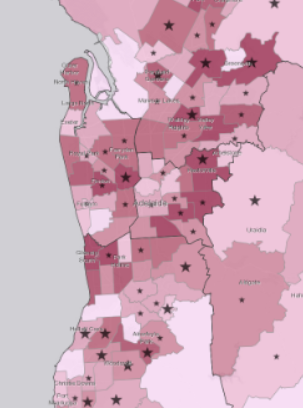Frailty map launched
 Authorities have released Australia’s first online frailty map to highlight gaps in service.
Authorities have released Australia’s first online frailty map to highlight gaps in service.
The map shows for the first time where Australia’s frail and pre-frail people live today and in the future, in order to help plan services for healthy ageing.
“Frailty is an increased vulnerability to adverse health outcomes, such as loss of mobility, falls leading to hospitalisation and death,” says researcher leader Dr Danielle Taylor.
“Frailty is associated with ageing, but is not an inevitable consequence of ageing. It is a preventable and treatable condition that reduces the quality of life of many older people.
“The first step in addressing frailty is to identify people who are frail or likely to become frail (pre-frail). While this can be done on an individual level by frailty screening, on a population level, geospatial population modelling can be used to model frailty prevalence and identify frail and pre-frail populations and how their distribution is likely to change in the future.”
In 2016, 3.6 million Australians (15.7 per cent of the total population) were over 65 years old.
More than half of them are estimated to be frail (more than 415,000) or pre-frail (1.7 million) and the number is expected to grow rapidly.
It is estimated that more than 600,000 people will be frail and 2.2 million pre-frail in 2027. The growth is expected to be fastest in regional, remote and outer metropolitan areas.
“Australia is the first country to have an interactive frailty map and that shows where frail and pre-frail people live and is in a unique position to address this growing issue,” says Dr Taylor.
“This information can be used to inform resource distribution, such as the provision of health services to areas that are likely to have a high level of need.
“The map is available for anyone to use including individuals or community groups that may wish to use the information to advocate for additional local services.”







 Print
Print